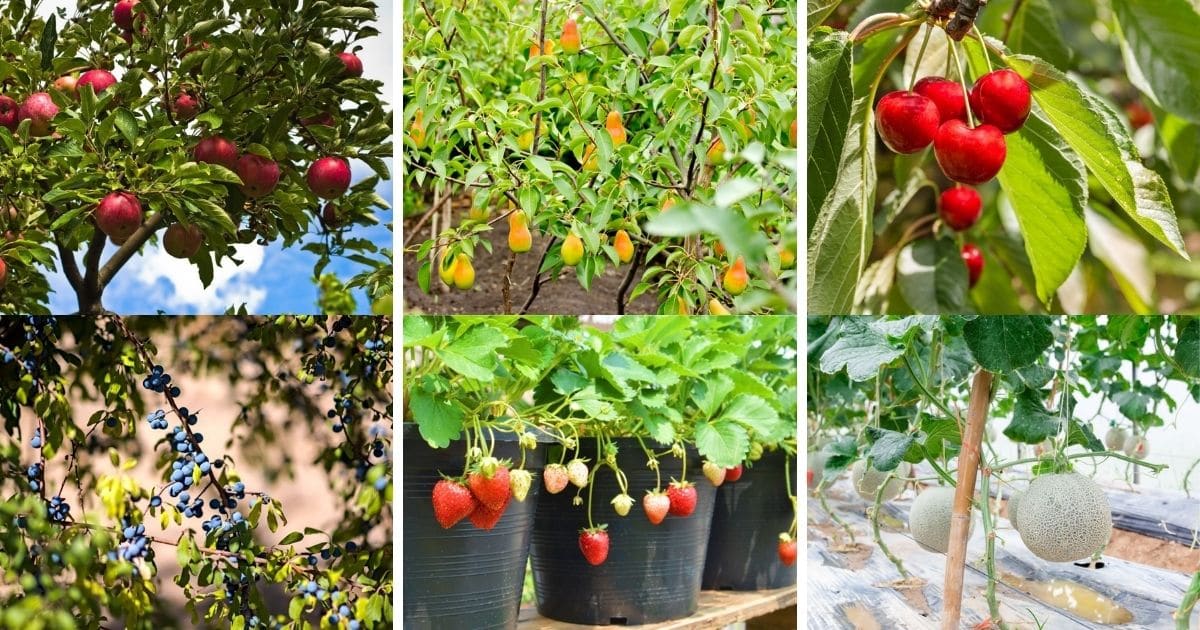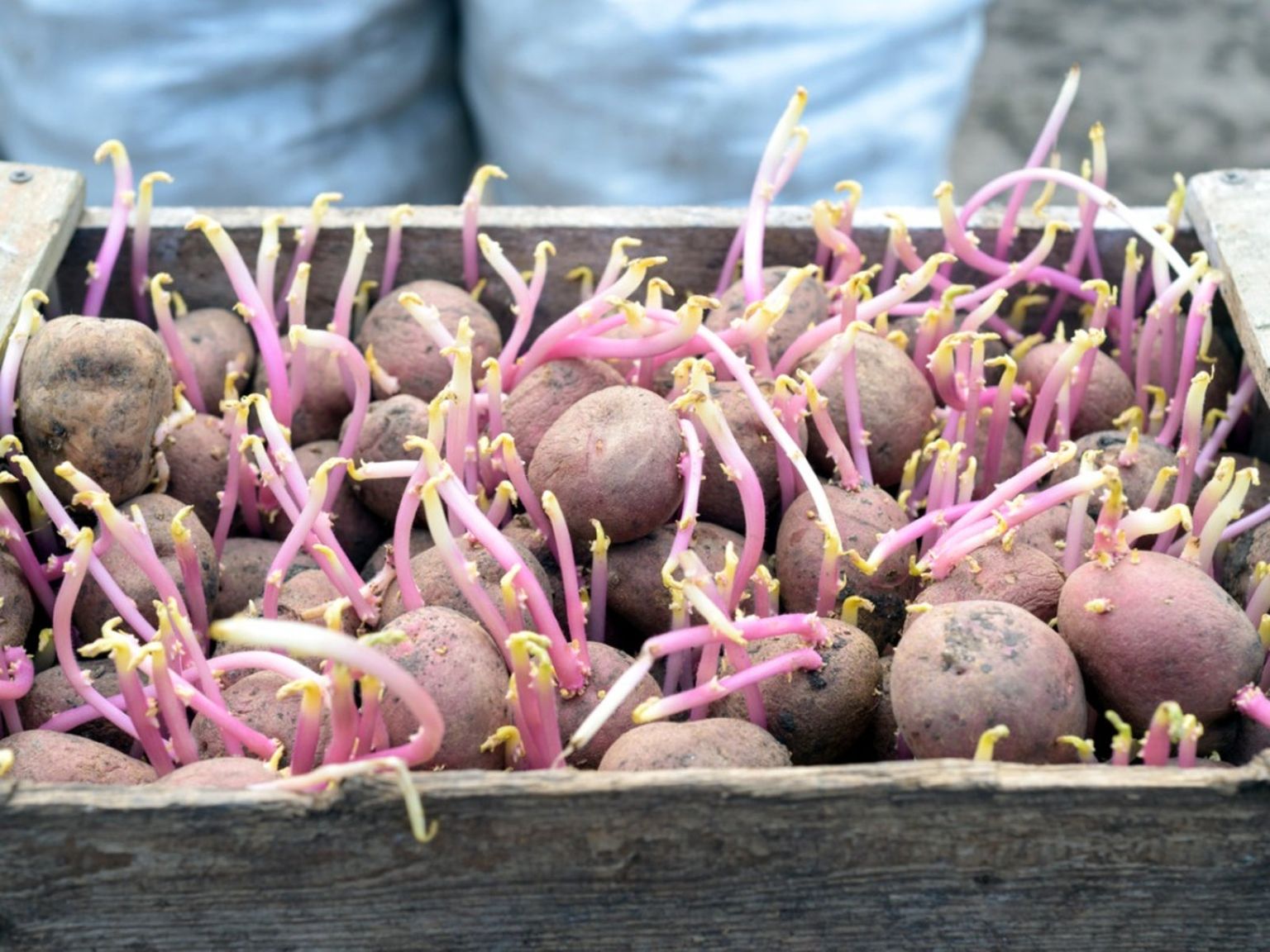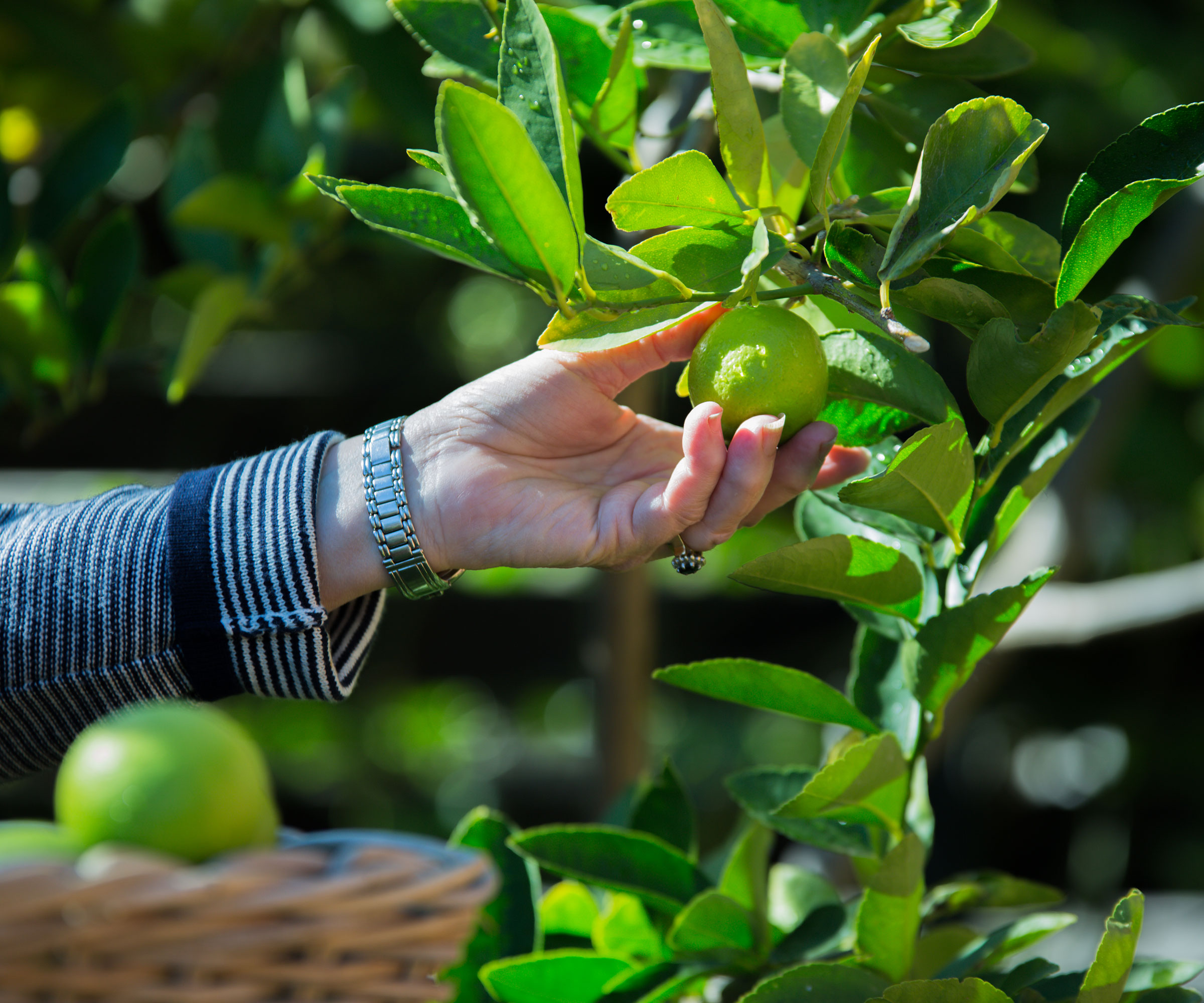The Joy of Homegrown Fruits: An Introduction
Growing fruits at home is an immensely rewarding experience, offering a multitude of benefits for both the gardener and their family. By nurturing fruit plants from seed or sapling, you actively participate in their growth process, fostering a deep connection with nature. The fruits of your labor are not only visually appealing but also provide a source of immense satisfaction. Consuming fresh, organic produce, harvested at the peak of ripeness, offers unparalleled flavor and superior nutritional value compared to store-bought alternatives. Moreover, homegrown fruits can be significantly more cost-effective, saving you money in the long run. By embracing the art of fruit cultivation, you not only enhance your gardening skills but also contribute to a sustainable lifestyle, reducing your carbon footprint and fostering a deeper appreciation for the natural world.
Choosing the Perfect Fruits for Your Home Garden
When selecting fruits to cultivate at home, it is crucial to consider factors such as climate, space availability, and personal preferences. By carefully evaluating these aspects, you can create a thriving fruit garden tailored to your unique growing conditions. Popular fruit types suitable for home gardening include berries, stone fruits, citrus, and tropical fruits. Berries, such as strawberries, blueberries, and raspberries, are an excellent choice for home gardens due to their compact growth habit and adaptability to various climates. These fruits are not only delicious but also rich in antioxidants, making them a healthy addition to any diet.
Stone fruits, including peaches, nectarines, plums, and cherries, thrive in temperate climates with warm summers and mild winters. These fruits offer stunning blossoms in the spring and juicy, flavorful fruits in the summer. Choose disease-resistant varieties to minimize pest and disease issues.
Citrus fruits, such as oranges, lemons, limes, and grapefruits, are well-suited for home gardens in warmer climates. Many citrus varieties can be grown in containers, allowing gardeners in cooler regions to enjoy these fruits by moving the containers indoors during the winter months.
Tropical fruits, like pineapples, bananas, mangoes, and papayas, require a warm, humid climate to flourish. However, some tropical fruit varieties can be grown in greenhouses or containers, enabling gardeners in temperate regions to cultivate these exotic fruits at home.
Preparing the Soil: The Foundation of a Fruitful Garden
Soil preparation is a critical step in establishing a successful fruit garden. By testing the soil for pH and nutrient levels, you can ensure that it provides the optimal environment for your chosen fruit varieties. Amending the soil with organic matter, such as compost or well-rotted manure, improves its structure and fertility, promoting healthy root development and robust plant growth. To prepare the soil for fruit plants, follow these steps:
Test the soil: Obtain a soil test kit from a local garden center or extension service to determine the pH and nutrient levels. Fruit plants typically prefer slightly acidic to neutral soil (pH 6.0 to 7.0), although some varieties, like blueberries, require more acidic conditions.
Amend the soil: Based on the soil test results, add the necessary amendments to achieve the desired pH and nutrient levels. Organic matter, such as compost or well-rotted manure, can improve soil structure, increase water retention, and provide a slow-release source of nutrients.
Select the right soil type: Different fruit varieties have specific soil preferences. For example, many stone fruits, such as peaches and plums, prefer well-draining loamy or sandy soils, while berries, like blueberries and raspberries, thrive in acidic, organic-rich soils.
Create raised beds: Raised beds can improve soil drainage and warmth, which is particularly beneficial for fruit plants that require a longer growing season. Fill the raised beds with a high-quality planting mix, amended with compost or well-rotted manure.
By investing time and effort in soil preparation, you lay the groundwork for a thriving fruit garden. Healthy, well-nourished soil not only supports stronger plant growth but also contributes to improved disease resistance and increased yield, ensuring a bountiful harvest of delicious, homegrown fruits.
Planting Techniques: Sowing the Seeds of Success
When it comes to planting fruits at home, various techniques can be employed, depending on the fruit variety, space availability, and personal preferences. Direct seeding, container gardening, and propagation through cuttings or layering are popular methods that can yield successful results.
Direct Seeding: Direct seeding involves sowing seeds directly into the ground, bypassing the need for seedlings or transplants. This method is suitable for fruits with larger seeds, such as squash, pumpkins, and melons. When direct seeding, ensure that the soil is loose, well-draining, and rich in organic matter. Plant seeds at the recommended depth and spacing, and keep the soil consistently moist until germination.
Container Gardening: Container gardening enables gardeners to grow fruits in a controlled environment, making it an excellent option for those with limited space or specific soil requirements. Choose containers with adequate drainage holes and fill them with a high-quality planting mix. Popular fruits for container gardening include strawberries, blueberries, dwarf citrus trees, and many types of dwarf or compact fruiting shrubs and trees.
Propagation through Cuttings or Layering: Propagation is the process of creating new plants from existing ones. This can be achieved through cuttings or layering. Softwood cuttings, taken from new growth, are ideal for propagating many fruit varieties, including blackberries, raspberries, and grapes. Layering involves encouraging a branch to grow roots while still attached to the parent plant. This method can be used for fruits like blackberries, raspberries, and certain types of blueberries.
When planting fruits at home, consider factors such as spacing, depth, and timing for optimal growth. Plant fruits at the recommended depth and spacing to ensure adequate root development and air circulation. Space plants according to their mature size, allowing enough room for growth and easy access for maintenance and harvesting. Timing is also crucial, as some fruits prefer to be planted in early spring, while others are better suited for fall planting. By employing the appropriate planting techniques, you can set the stage for a thriving fruit garden and enjoy the many rewards of growing fruits at home.
Nurturing Your Fruit Plants: Essential Care and Maintenance
To ensure a thriving fruit garden, it is essential to provide proper care and maintenance for your fruit plants. Regular watering, fertilizing, pruning, and pest and disease management are critical practices that contribute to the overall health and productivity of your plants. By closely monitoring your fruit plants and adjusting care as needed throughout the growing season, you can maximize their potential and enjoy a bountiful harvest.
Watering: Fruit plants require consistent moisture for optimal growth. However, overwatering can lead to root rot and other issues. Aim to water deeply and infrequently, providing enough moisture to saturate the root zone without causing waterlogging. Consider implementing a drip irrigation system or soaker hoses to deliver water directly to the plant roots, minimizing evaporation and promoting water efficiency.
Fertilizing: Fertilizers provide essential nutrients that support plant growth and development. Choose a balanced, slow-release fertilizer formulated for fruit plants, and follow the manufacturer’s recommendations for application rates and timing. Regularly test the soil to monitor nutrient levels and adjust fertilization practices accordingly.
Pruning: Pruning is an essential maintenance practice that encourages bushy growth, improves fruit quality, and manages plant size. Prune fruit plants during their dormant season, removing dead, damaged, or diseased wood, and thinning out overcrowded branches. Always use clean, sharp pruning tools to minimize the risk of disease transmission.
Pest and Disease Management: Fruit plants are susceptible to various pests and diseases that can compromise their health and productivity. Regularly inspect your plants for signs of infestation or infection, and take prompt action to address any issues. Employ integrated pest management (IPM) strategies, such as biological controls, cultural practices, and targeted pesticide applications, to manage pests and diseases while minimizing environmental impact.
By diligently caring for your fruit plants and addressing their needs throughout the growing season, you can foster strong, healthy plants that produce an abundance of delicious, nutritious fruits. As your fruit gardening skills and knowledge expand, continue to explore new techniques and best practices, and share your experiences with others in the fruit gardening community.
Harvesting Your Homegrown Bounty: Patience and Reward
Harvesting your homegrown fruits is a joyous occasion, marking the culmination of your nurturing efforts and offering an opportunity to savor the delicious, fresh produce you’ve grown. To ensure the best flavor and nutritional value, it is essential to harvest fruits at the right time and employ proper techniques to minimize damage and maximize storage life.
Determining the Right Time to Harvest: Each fruit variety has a unique maturation period, ranging from a few weeks to several months after planting. Familiarize yourself with the typical harvest time for your chosen fruits and monitor their progress regularly. Ripe fruits often display visible signs, such as changes in color, size, or texture. Taste testing is another effective way to determine optimal ripeness.
Patience: Allowing fruits to fully ripen on the plant is crucial for optimal flavor and nutritional value. Resist the urge to harvest fruits prematurely, as they may not reach their full potential in terms of taste, aroma, or nutrient content. Instead, practice patience and wait for the perfect moment to enjoy the fruits of your labor.
Proper Harvesting Techniques: To minimize damage during harvesting, use clean, sharp tools and handle fruits gently. For fruits with a thick skin or firm flesh, such as apples or pears, use pruning shears or a knife to cut the fruit from the branch, leaving a short stem attached. Delicate fruits, like berries or grapes, should be carefully plucked by hand, taking care not to crush or bruise them.
Post-Harvest Care: After harvesting, handle fruits with care to prevent bruising or damage. Sort fruits by type and condition, discarding any that show signs of spoilage or disease. Clean harvesting tools and containers thoroughly to prevent cross-contamination and maintain food safety.
Storage: Different fruit types require specific storage conditions to extend their shelf life and preserve quality. Some fruits, like bananas and avocados, continue to ripen after harvesting and should be stored at room temperature until they reach the desired ripeness. Other fruits, such as apples and pears, can be stored in the refrigerator to slow down the ripening process and prolong storage life.
By practicing patience and employing proper harvesting techniques, you can enjoy the full benefits of your homegrown fruits, relishing their exquisite flavors and reaping the rewards of your nurturing efforts. As you savor each bite, remember that the joy of homegrown fruits extends far beyond the harvest, offering opportunities for learning, experimentation, and connection with the natural world.
Preserving the Harvest: Extending the Fruits of Your Labor
Preserving your homegrown fruits is an excellent way to enjoy their flavors and nutritional benefits long after the harvest season has ended. Various preservation methods, such as canning, freezing, drying, and making jams or juices, can help extend the life of your fruit bounty. By selecting the best preservation method for each fruit type and ensuring food safety, you can savor the fruits of your labor year-round.
Canning: Canning is a time-honored preservation method that involves sealing food in airtight containers, such as jars or cans, and heating them to a temperature that kills bacteria, yeasts, and molds. This process creates a vacuum seal, preventing the entry of air and microorganisms that can cause spoilage. When canning fruits, choose high-acid fruits, like berries, peaches, and pears, or add acid in the form of lemon juice or citric acid to ensure food safety.
Freezing: Freezing is a simple and effective preservation method that retains the flavor, texture, and nutritional value of fruits. To freeze fruits, wash, dry, and slice them into uniform pieces, then arrange them in a single layer on a baking sheet lined with parchment paper. Once frozen, transfer the fruit pieces to airtight containers or freezer bags, removing as much air as possible to prevent freezer burn.
Drying: Drying is an ancient preservation method that removes moisture from fruits, inhibiting the growth of microorganisms and enzymes that cause spoilage. To dry fruits, wash, slice, and blanch them as needed, then arrange the pieces on dehydrator trays or baking sheets lined with parchment paper. Dry the fruits at a low temperature, monitoring them closely to prevent over-drying or scorching.
Making Jams or Juices: Transforming your homegrown fruits into jams or juices is an excellent way to preserve their flavors and nutrients. When making jams, combine fruit with sugar and a liquid pectin or natural pectin source, like lemon juice or apple juice, then cook the mixture to a gel-like consistency. For juices, extract the liquid from fruits using a juicer or blender, then strain out any solids. To ensure food safety, acidify low-acid fruit juices with lemon juice or citric acid before canning.
By employing these preservation methods, you can extend the life of your homegrown fruits and savor their flavors and nutritional benefits throughout the year. As you explore the world of fruit preservation, continue to expand your skills and knowledge, seeking out innovative and creative concepts that provide value and usefulness to you and your family.
Expanding Your Fruit Garden: Taking It to the Next Level
Once you have gained experience and confidence in growing fruits at home, it’s time to expand your fruit gardening skills and knowledge. By exploring new fruit varieties, experimenting with innovative growing techniques, and connecting with other fruit gardeners, you can take your homegrown fruit garden to new heights.
Diversify Your Fruit Selection: To keep your fruit garden interesting and engaging, consider adding new fruit varieties to your repertoire. Research climate-appropriate fruits that thrive in your region, and explore unique cultivars that offer exceptional flavors, textures, or ornamental value. By diversifying your fruit selection, you can expand your gardening horizons and enjoy a wider range of homegrown produce.
Experiment with Innovative Growing Techniques: As you gain experience in fruit gardening, don’t be afraid to push the boundaries and try new techniques. Explore vertical gardening methods, such as trellises, arbors, or espaliers, to maximize space efficiency and create visually stunning garden features. Investigate hydroponic or aquaponic systems for soil-free fruit cultivation, or experiment with grafting and budding to create unique fruit combinations or propagate rare varieties.
Connect with Other Fruit Gardeners: Sharing your experiences and learning from others is an essential aspect of expanding your fruit gardening skills. Join local gardening clubs or associations, attend workshops or conferences, and engage with fellow fruit gardeners online through forums, social media groups, or blogs. By connecting with others, you can gain valuable insights, learn from their successes and failures, and forge lasting friendships within the fruit gardening community.
Continue Learning: To stay up-to-date on the latest fruit gardening trends, techniques, and best practices, invest in high-quality gardening books, magazines, or websites. Subscribe to newsletters, podcasts, or YouTube channels that focus on fruit gardening, and consider enrolling in online courses or certification programs to deepen your understanding of specific fruit-related topics.
By embracing a spirit of curiosity, experimentation, and continuous learning, you can take your fruit gardening skills to new heights and enjoy the many rewards that come with growing and harvesting your own fruits at home. As you embark on this exciting journey, remember to share your experiences, knowledge, and passion for fruit gardening with others, inspiring them to join you in cultivating nature’s sweetness in their own backyards.





/GettyImages-576798993-af0018703ddc49ab8f34fdd7b8b5798b.jpg)